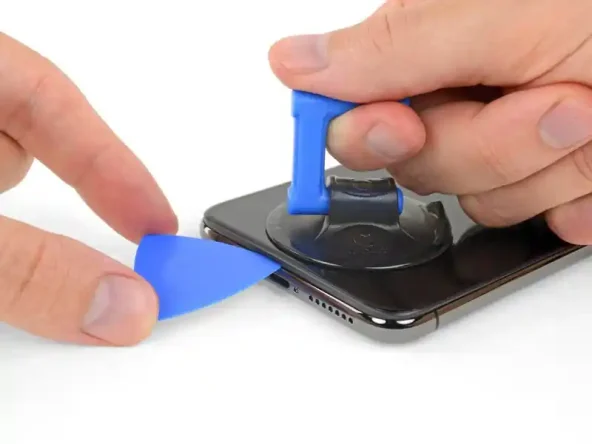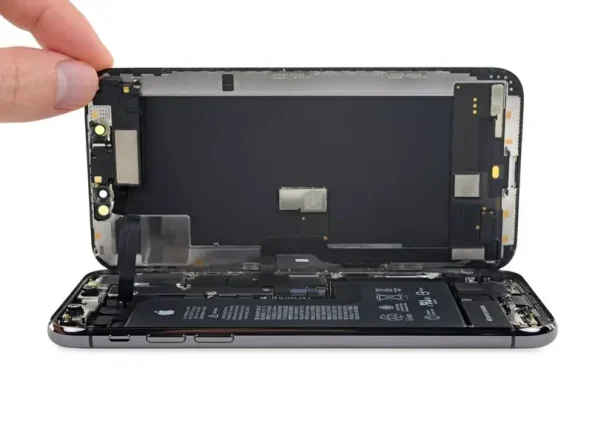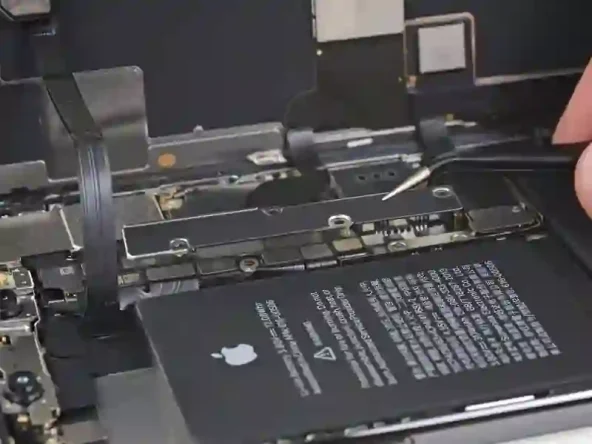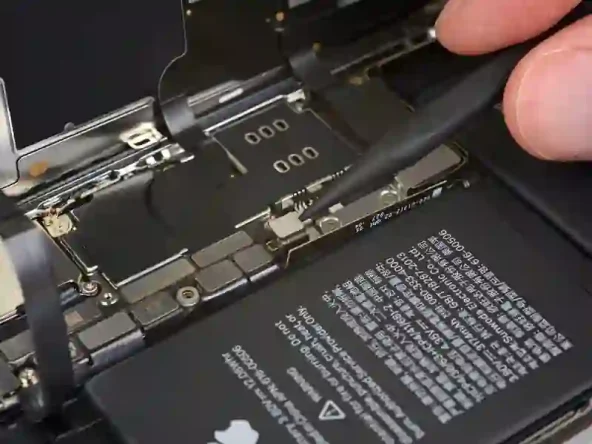If your iPhone XS Max screen is cracked, unresponsive to touch, or displays no image when you turn on the phone, follow this replacement procedure to restore your iPhone to working order using a new screen assembly.
The combined earpiece speaker and sensor assembly attached to the back of the screen is factory-paired with your iPhone, so you must transfer this assembly from your old screen to your new one during the screen replacement. It contains the flood illuminator, which is part of the facial recognition technology, Face ID.
Face ID will cease to function if damaged or replaced, so be extremely careful not to damage any of these components during this procedure. If damaged, only Apple can restore Face ID functionality.
Step 1:Pentalobe Screws

Before beginning, discharge your iPhone’s battery below 25%. A charged lithium-ion battery can catch fire or explode if punctured.
Before beginning disassembly, turn off your iPhone.
Remove the two 6.9mm long Pentalobe screws at the bottom of the iPhone.
Opening the iPhone’s display will compromise its waterproof seals. Have replacement seals available before completing this step, or take precautions to avoid liquid exposure if you reassemble your iPhone without replacing the seals.
Step 2

If using a single suction cup, apply it to the bottom edge of the phone, avoiding the curved portion of the glass.
Step 3

Pull up on the suction cup with firm, continuous pressure to create a slight gap between the front panel and rear case.
Insert the opening pick between the screen and the plastic frame, not directly into the screen.
The watertight adhesive on the screen is very strong, and creating this initial gap requires considerable force. If you’re having trouble opening a gap, increase the heat and gently rock the screen up and down to weaken the adhesive until you create enough of a gap to insert your opening pick.
Step 4

Slide the tab up from the lower left corner of the iPhone along the left side to loosen the adhesive.
Please do not insert the tab more than 3mm, otherwise you will damage the internal components of your iPhone.
Insert your pick along the bottom edge of the iPhone and slide it toward the right, continuing to separate the adhesive.
Do not insert the pick more than 3 mm, as this may damage the display cables on this side of the iPhone.
Step 5

Open the iPhone by swinging the display upward from the left side, like opening a book.
Please don’t try to completely detach the display just yet, as several flimsy ribbon cables still connect it to the iPhone’s logic board.
While you’re working on other parts of your phone, find a support for the screen.
During reassembly, hold the monitor in place, align the clips along the top edge, and carefully press the top edge into place, then push the rest of the monitor down. If it doesn’t snap into place easily, check the condition of the clips around the monitor’s perimeter and make sure they’re not bent.
Step 6

Remove the four Y000 screws securing the logic board cover bracket. The lengths are as follows:
Two 1.1 mm screws
One 1.5 mm screw
One 3.7 mm screw
Throughout the repair process, record the exact location of each screw and make sure it goes back exactly to its original position to avoid damaging your iPhone.
Step 7

Remove the bracket.
The bracket may be lightly adhered in place. Gently but firmly lift to separate it.
During reassembly, this is a good point to power on the iPhone and test all functions before sealing the display in place. Be sure to fully remove the iPhone before continuing.
Step 8

Use a spudger or a clean fingernail to pry the battery connector up from its socket on the logic board.
Try not to damage the black silicone seals surrounding this and other board connections. These seals provide additional protection against water and dust intrusion.
Move the connector slightly away from the logic board to prevent it from accidentally making contact with the socket and providing power to the phone during your repair.
Step 9

Remove the display components.
During reassembly, if you want to replace the waterproof glue around the edges of the monitor, pause here.
